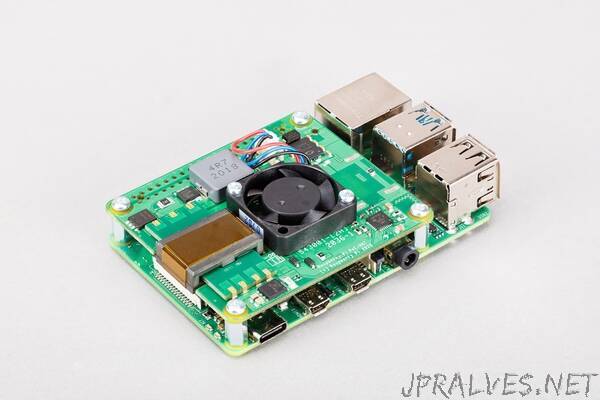
“Today we’re announcing the next generation of our Power over Ethernet (PoE) HAT. Compared to its predecessor, the Raspberry Pi PoE+ HAT delivers more power, implementing the 802.3at PoE+ standard; and it runs cooler, thanks to various design improvements. Best of all, we’ve been able to keep the original affordable price of $20.
The current global semiconductor shortage — which you’ll almost certainly have read about by now — is constraining our supply of the original PoE HAT. In general, we’re weathering the shortage very well, and the supply of mainline Raspberry Pi computers, Zeros and our other products have not been affected (we’re very good at pipelining). Unfortunately, the first-gen PoE HAT uses silicon that’s in short supply.
The old HAT will remain in production, but we are taking the unusual step of announcing this new product before we have stock in channel, so that industrial customers can consider migrating to the new PoE+ HAT, which will have shorter lead times. The Raspberry Pi PoE+ HAT will be available from our Approved Resellers in early June. (Visit our Products page to be automatically directed to your local Approved Reseller when you select a product.)
Power (over Ethernet) to the people
One of the coolest features we’ve added to Raspberry Pi in the last few years has been Power over Ethernet (PoE) support. From Raspberry Pi 3B+ onward, we use an Ethernet jack with the appropriate taps on its windings, and connect those taps to an additional 4-pin header, located just beneath the top-right mounting hole. A HAT can pick up these signals, request power from the switch, and regulate the resulting 37-57V DC down to 5V to power the Raspberry Pi.
At the end of 2018, we released the Raspberry Pi PoE HAT, which did just this. After some embarrassing teething troubles, it has become one of our best-selling accessories. We’ve seen it used in industrial applications like digital signage and factory automation, and by hobbyists who want to put their Raspberry Pi somewhere remote, sharing a single cable for both power and data.
More power
The original PoE HAT implements the 802.3af standard, and can deliver a guaranteed minimum of 13W to the Raspberry Pi. This is enough to power a Raspberry Pi 4 at maximum load, but not quite enough to power the hungriest USB peripherals at the same time.
The PoE+ HAT implements the 802.3at standard. When used with a compatible switch or injector this means it can deliver up to 25W, as you can see from this comparison table.”
